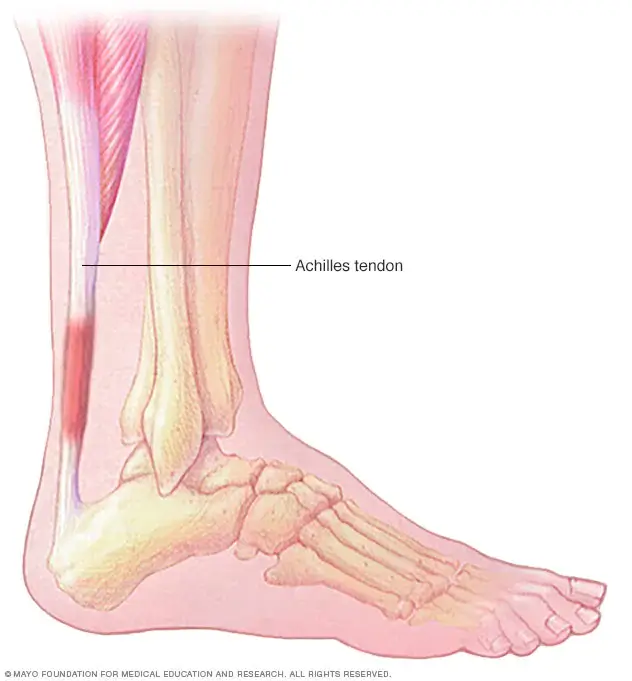What is it and what are the most common symptoms?
The achilles tendon is the largest tendon in the body which connects the calf muscles to the heel bone. The achilles tendon is very strong and can withstand a lot of stress, however it is prone to tendinitis which is associated with overuse and causes the tendon to become irritated and inflamed.

Tendinitis is explained as the acute inflammation of a tendon. Tendinopathy is another term used to describe the condition of a tendon, which refers to when there is degeneration to the tendon resulting in chronic damage over time. Inflammation is a natural response to injury, which can often cause pain and swelling.
It is important to remember achilles tendinitis is different from an achilles rupture. Achilles rupture is when the tendon has completely separated from the heel bone or torn all the way through.
There are different types of achilles tendinitis, insertional and non-insertional. Insertional achilles tendinitis involves the site where the tendon attaches to the heel bone. It can occur at any time but it is most common in runners and often caused by tightness in the calves which then creates more stress on the achilles tendon insertion.
Non-insertional tendinitis involves the fibres in the middle portion of the tendon. Over time these fibres may break down and develop tiny tears leading to tendon swelling and also thickening. This is quite common in runners and younger, active people.
What causes it?
There are many different causes including…
- Sudden increase in amount of activity or intensity of exercise
- Muscular tightness in the calves – this puts extra stress on the achilles tendon
- Haglunds deformity – which is the enlargement of the heel bone which can rub on the achilles causing pain and inflammation.

Other factors…
- Men are more likely to suffer from achilles tendinitis than women
- Achilles tendinitis is more common the older you get
- Wearing incorrect footwear or worn out shoes
- Having a naturally flat arch of the foot puts more strain on the tendon
Some symptoms include…
- Often begins as a mild ache in heel or back of the leg – usually after physical activity
- More severe pain may occur after running, jumping or lots of stairs
- Pain and stiffness first thing in the morning
- Thickening of the tendon
- Pain on back of heel when wearing shoes

What to do if you think you have achilles tendinitis…
- Rest – it is important to stop any activities that are making it worse.
- Depending on the severity, the foot/ankle may need to be immobilised.
- Switching high impact training for low impact training – ie. Cycling instead of running.
- Ice – repeat this throughout the day for 20 minute intervals, making sure the ice doesn’t go directly onto the skin.
- Stretches/exercises – these help to reduce muscular tension surrounding Achilles, strengthen the calves and also reduce tension to the Achilles itself.
If you think you may be suffering with achilles tendinitis or have any of these symptoms, please do get booked in for an appointment with our Sports Therapists and we can do a thorough assessment, provide treatment and also stretches and exercises specific for your injury.
Abi Wheatley
Sports Therapist

